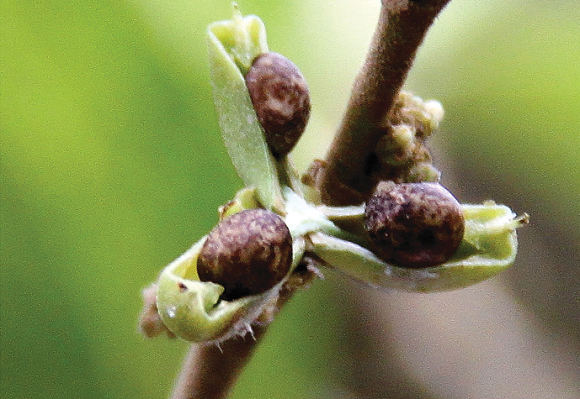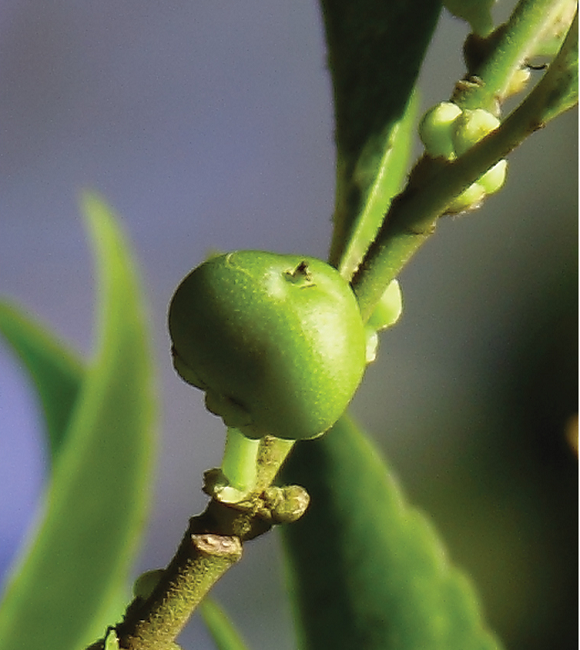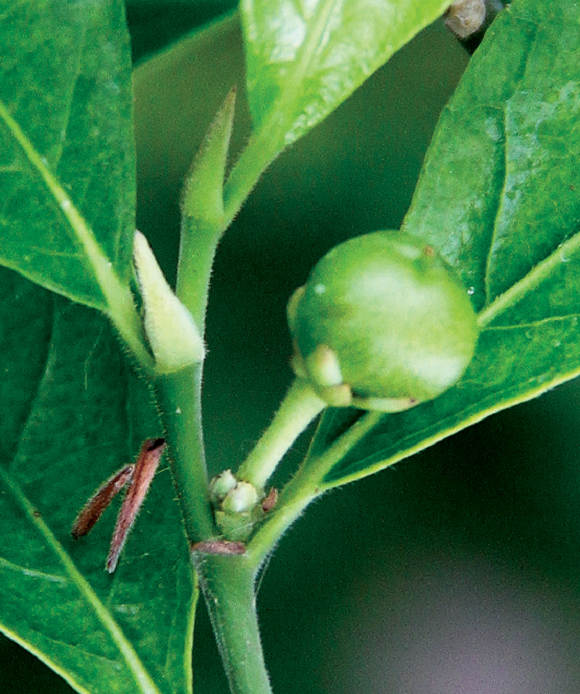
How many times have you heard the phrase “in a post-apocalyptic world…“? Movies, books, comics and games draw upon that all-too-common setting to dream up stories where man is pushed to the brink in order to survive in a unforgiving environment.
What makes a world post-apocalyptic though? There are plenty of ways to get there – nuclear apocalypse, asteroid strikes, zombies, giant robots, but one thing is pretty common: Food is scarce and people have to scavenge for it because the land is just too polluted to grow anything edible. But what if you could plant something in the ground that would allow other things to grow? What if nature already had its own answer to this problem? What if you could make that “every man for himself” world back into a “let’s work off the land together!” love-fest? Sounds to us like a billion dollar industry! Do they still have dollars in a post-apocalyptic world?!?!
In May 2014, researchers in the Philippines came across a very interesting plant that basically eats nickel. Only 0.5-1% of the plants in the nickel-rich soils of the Zambales Province on the Luzon Island exhibit this trait, making it an extremely rare phenomenon! Researchers found that this plant had up to 18,000 parts per million of nickel in its leaves. It’s been named Rinorea niccolifera, the niccolifera stemming from the fact that it absorbs a lot of nickel.
▼Later, you can get your nickel back.
There are only about 450 species of plants in the world that exhibit this sort of trait. That’s a tiny fraction of the over 300,000 species of plants. Rinorea niccolifera belongs to a group of plants called hyperaccumulator plants. They are of particular interest because they can be used for phytomining or phytoremediation.
Phytomining is the process of growing and harvesting plants that absorb valuable metals from the soil. These metals can be extracted from the plants post-harvest. Phytoremediation, on the other hand, is what could bring us back from an Akira-like world. Phytoremediation refers to plants being used to remove toxic minerals from the soil. Scientists already hope to use hyperaccumulator plants in just this way to renew contaminated soils so that edible crops can be grown there again.
These hyperaccumulator plants can be used to kick-start green technologies, but it will take researchers like those in the Philippines to help make it happen. Those of us at RocketNews24 sure hope that these plants will halt an apocalypse before one happens. We aren’t ready to trade our laptop batteries for two packages of Top Ramen!
▼This world saving plant is ready for it’s close-up, Mr. DeMille!
Source: globalpost, Phytokeys
Images: Edwino S. Fernando




 Sanrio theme park in Japan announces plans to expand into a Sanrio resort
Sanrio theme park in Japan announces plans to expand into a Sanrio resort Japan’s first hotel with a human washing machine is now ready for you to come and bathe in it
Japan’s first hotel with a human washing machine is now ready for you to come and bathe in it Osaka teen arrested for hacking into Internet cafe’s app to steal data, was helped by Chat-GPT
Osaka teen arrested for hacking into Internet cafe’s app to steal data, was helped by Chat-GPT Bear attack shelters going on sale in Japan as country experiences record-high number of incidents
Bear attack shelters going on sale in Japan as country experiences record-high number of incidents A whole slew of Totoro Christmas cakes are on their way to make the season extra merry【Photos】
A whole slew of Totoro Christmas cakes are on their way to make the season extra merry【Photos】 Sanrio theme park in Japan announces plans to expand into a Sanrio resort
Sanrio theme park in Japan announces plans to expand into a Sanrio resort Japan’s first hotel with a human washing machine is now ready for you to come and bathe in it
Japan’s first hotel with a human washing machine is now ready for you to come and bathe in it Osaka teen arrested for hacking into Internet cafe’s app to steal data, was helped by Chat-GPT
Osaka teen arrested for hacking into Internet cafe’s app to steal data, was helped by Chat-GPT Bear attack shelters going on sale in Japan as country experiences record-high number of incidents
Bear attack shelters going on sale in Japan as country experiences record-high number of incidents A whole slew of Totoro Christmas cakes are on their way to make the season extra merry【Photos】
A whole slew of Totoro Christmas cakes are on their way to make the season extra merry【Photos】 Japan’s new Mister Donut matcha donuts have so much green tea flavor one has to use the hole
Japan’s new Mister Donut matcha donuts have so much green tea flavor one has to use the hole What makes this new Japanese convenience store chain better than 7-Eleven?
What makes this new Japanese convenience store chain better than 7-Eleven? A century of love – How dating and marriage have evolved in Japan
A century of love – How dating and marriage have evolved in Japan Uniqlo Ukiyo-e Blue T-shirts: A cool-hued reinterpretation of some of Japan’s greatest paintings
Uniqlo Ukiyo-e Blue T-shirts: A cool-hued reinterpretation of some of Japan’s greatest paintings Stamina-destroying “Paralysis Noodles” are Tokyo’s newest over-the-top ramen innovation
Stamina-destroying “Paralysis Noodles” are Tokyo’s newest over-the-top ramen innovation Nintendo’s Kirby now delivering orders at Kura Sushi restaurants, but not in Japan
Nintendo’s Kirby now delivering orders at Kura Sushi restaurants, but not in Japan Japan considering raising international traveler departure tax even more than previously reported
Japan considering raising international traveler departure tax even more than previously reported Is China’s don’t-go-to-Japan warning affecting tourist crowds in Shibuya’s Don Quijote?
Is China’s don’t-go-to-Japan warning affecting tourist crowds in Shibuya’s Don Quijote? China’s don’t-go-to-Japan warning seems to be affecting Osaka’s Namba and Dotonbori neighborhoods
China’s don’t-go-to-Japan warning seems to be affecting Osaka’s Namba and Dotonbori neighborhoods Japan’s EF English Proficiency Index rank drops for 11th straight year, hits lowest ever
Japan’s EF English Proficiency Index rank drops for 11th straight year, hits lowest ever Chinese government’s don’t-go-to-Japan warning has heartwarming non-effect on Yokohama Chinatown
Chinese government’s don’t-go-to-Japan warning has heartwarming non-effect on Yokohama Chinatown KFC Japan opens a Christmas restaurant in Tokyo…but why???
KFC Japan opens a Christmas restaurant in Tokyo…but why??? Studio Ghibli adds new Kiki’s Delivery Service music box to its anime merchandise shop in Japan
Studio Ghibli adds new Kiki’s Delivery Service music box to its anime merchandise shop in Japan Japan’s human washing machines will go on sale to general public, demos to be held in Tokyo
Japan’s human washing machines will go on sale to general public, demos to be held in Tokyo Starbucks Japan unveils new Christmas goods and a rhinestone tumbler that costs 19,500 yen
Starbucks Japan unveils new Christmas goods and a rhinestone tumbler that costs 19,500 yen Real-world Nausicaa Ghibli anime glider completes its final flight in Japan【Video】
Real-world Nausicaa Ghibli anime glider completes its final flight in Japan【Video】 Japanese train company is letting fans buy its actual ticket gates for their homes
Japanese train company is letting fans buy its actual ticket gates for their homes Is China’s don’t-go-to-Japan warning affecting tourist crowds in Tokyo’s Asakusa neighborhood?
Is China’s don’t-go-to-Japan warning affecting tourist crowds in Tokyo’s Asakusa neighborhood? The 10 best day trips from downtown Tokyo【Survey】
The 10 best day trips from downtown Tokyo【Survey】 Brand-new Pokémon park opens in Japan with larger-than-life-size Lapras【Photos】
Brand-new Pokémon park opens in Japan with larger-than-life-size Lapras【Photos】 Japanese government considering tripling departure taxes to combat overtourism
Japanese government considering tripling departure taxes to combat overtourism Starbucks Japan unveils the new Soupuccino
Starbucks Japan unveils the new Soupuccino Survey asks foreign tourists what bothered them in Japan, more than half gave same answer
Survey asks foreign tourists what bothered them in Japan, more than half gave same answer Japan’s deadliest food claims more victims, but why do people keep eating it for New Year’s?
Japan’s deadliest food claims more victims, but why do people keep eating it for New Year’s? We deeply regret going into this tunnel on our walk in the mountains of Japan
We deeply regret going into this tunnel on our walk in the mountains of Japan Studio Ghibli releases Kodama forest spirits from Princess Mononoke to light up your home
Studio Ghibli releases Kodama forest spirits from Princess Mononoke to light up your home Major Japanese hotel chain says reservations via overseas booking sites may not be valid
Major Japanese hotel chain says reservations via overseas booking sites may not be valid Put sesame oil in your coffee? Japanese maker says it’s the best way to start your day【Taste test】
Put sesame oil in your coffee? Japanese maker says it’s the best way to start your day【Taste test】 The top 10 annoying foreign tourist behaviors on trains, as chosen by Japanese people【Survey】
The top 10 annoying foreign tourist behaviors on trains, as chosen by Japanese people【Survey】 No more using real katana for tourism activities, Japan’s National Police Agency says
No more using real katana for tourism activities, Japan’s National Police Agency says Starbucks Japan reveals new sakura drinkware collection, inspired by evening cherry blossoms
Starbucks Japan reveals new sakura drinkware collection, inspired by evening cherry blossoms Japan’s new Mister Donut matcha donuts have so much green tea flavor one has to use the hole
Japan’s new Mister Donut matcha donuts have so much green tea flavor one has to use the hole What makes this new Japanese convenience store chain better than 7-Eleven?
What makes this new Japanese convenience store chain better than 7-Eleven? A century of love – How dating and marriage have evolved in Japan
A century of love – How dating and marriage have evolved in Japan Uniqlo Ukiyo-e Blue T-shirts: A cool-hued reinterpretation of some of Japan’s greatest paintings
Uniqlo Ukiyo-e Blue T-shirts: A cool-hued reinterpretation of some of Japan’s greatest paintings Stamina-destroying “Paralysis Noodles” are Tokyo’s newest over-the-top ramen innovation
Stamina-destroying “Paralysis Noodles” are Tokyo’s newest over-the-top ramen innovation Major Japanese noodle chain is closing on Christmas Eve so workers can spend time with families
Major Japanese noodle chain is closing on Christmas Eve so workers can spend time with families Once you hear this lady sing “Yooooooghurppe”, you may never stop hearing it
Once you hear this lady sing “Yooooooghurppe”, you may never stop hearing it Studio Ghibli releases new Totoro and Jiji blankets to keep you cosy this winter
Studio Ghibli releases new Totoro and Jiji blankets to keep you cosy this winter Internet survey sheds light on how Japanese women deal with the hair ‘down there’
Internet survey sheds light on how Japanese women deal with the hair ‘down there’ A history of Japanese schoolgirls’ purikura sticker booth trends
A history of Japanese schoolgirls’ purikura sticker booth trends We try European Cup Noodle Soba flavors to see which ones come out on top 【Taste test】
We try European Cup Noodle Soba flavors to see which ones come out on top 【Taste test】 Pizza Hut’s new Oreo pizza is like nothing we’ve ever eaten before
Pizza Hut’s new Oreo pizza is like nothing we’ve ever eaten before We check out the new apartment building construction site area that opened in KidZania Tokyo
We check out the new apartment building construction site area that opened in KidZania Tokyo
Leave a Reply